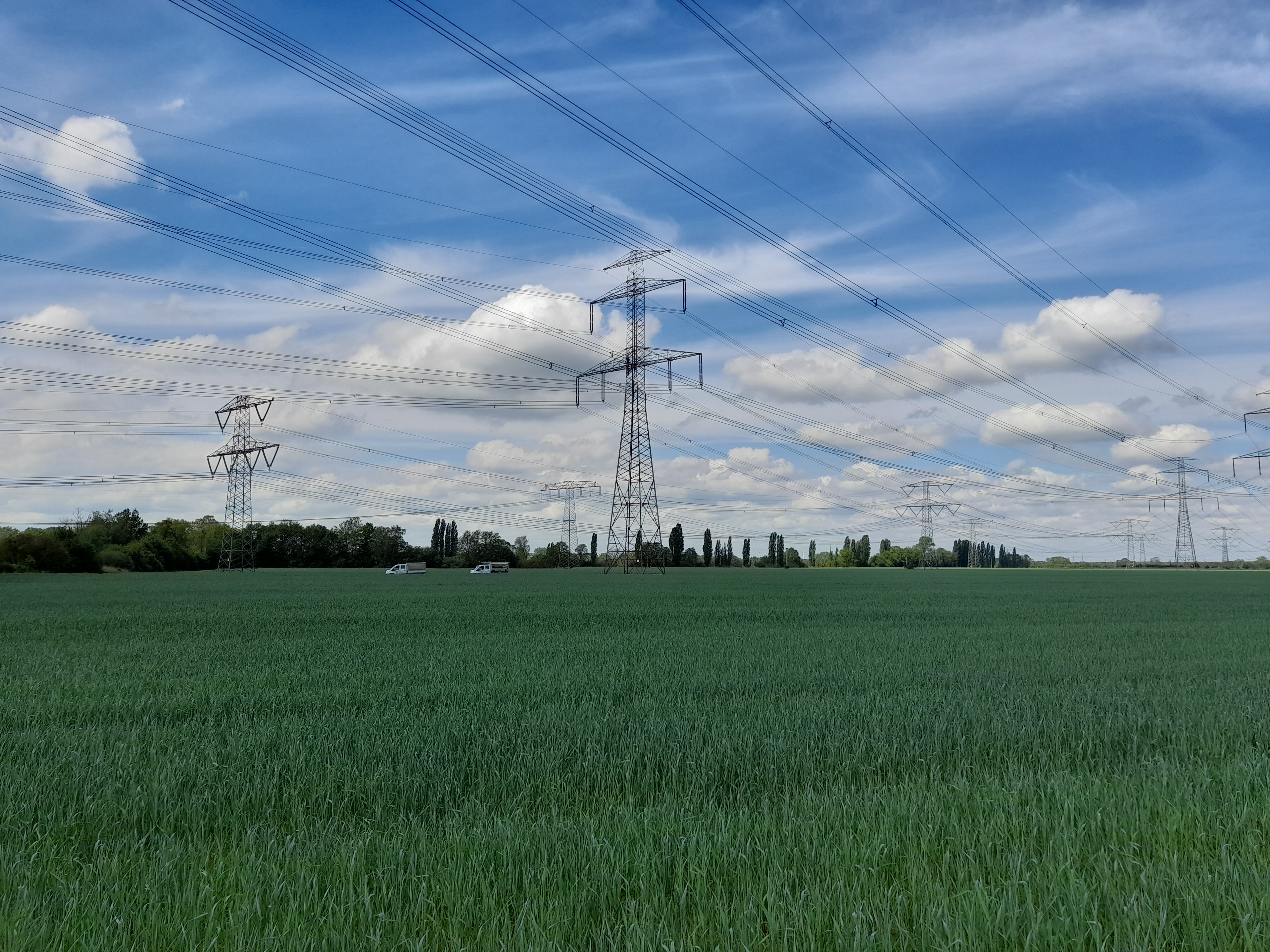Hint: This website is not optimized for your browser version.
Energy market topics
Germany and Austria introduce congestion management
1 October 2018 – The energy transition is constantly bringing changes to the electricity system, including the expansion of renewables, the construction of new generators, the grid expansion and increasing flexibility of consumption. The electricity trading framework also needs to keep up with these developments. As of 1 October 2018, actual network capacity is taken into consideration in wholesale electricity trading between Germany and Austria. Austrian traders can only buy as much electricity from Germany as the power lines can carry. For this purpose, a congestion management system integrated into the European market coupling system is used on the border between the two countries, with positive effects for network operation, system stability, network charges and ultimately for consumers as well.
Germany used to be in a single bidding zone with Luxembourg and Austria, meaning that electricity could be traded on the wholesale market between the three countries without limits and at the same price. Wind power from Schleswig-Holstein cost just as much for an Austrian consumer as it did for an industrial company from Hamburg.
While this had a lot of advantages for the market, it brought challenges as well, as the German grid and interconnection lines (the lines connecting the electricity grids of neighbouring countries) have physically limited transport capacities. Congestion occurs in a line when more electricity is traded than can be transported. Network operators then have to use redispatching to ensure that congestion in the affected line is eased. Redispatching means that the transmission system operator tells power plants before the congestion to reduce their generation and those after the congestion to increase it. Such adjustments to generation are financed via network charges, ie ultimately by electricity customers. In the past, the lack of restrictions on trade between Germany and Austria often led to overloading and made redispatching necessary to maintain system security.
The laws of physics governing the flow of electricity in the grid mean that some of the electricity traded between Germany and Austria always goes via the grids of other neighbours such as Poland and Czechia. Trading with those countries has repeatedly had to be restricted too because some interconnector capacity was being taken up by these "loop flows".
The congestion management has been introduced because even once the grid has been expanded as planned, exchange capacity between Germany and Austria will not be sufficient in the long term to transport peaks in trade between them. It will also relieve pressure on the grids of neighbouring countries.
The single bidding zone before and after:
But why does congestion occur? The electricity market brings supply and demand together. When Germany is producing a lot of electricity at relatively low prices, Austrian electricity traders can meet their country's needs more cheaply with German electricity. Typically, Austrian consumers can access cheap German wind power in particular when it is windy in the north of Germany. It is then the job of the grid to get the electricity from the generating installations in Germany over the border to Austria, where it is needed. Each individual power line has a certain maximum transportation capacity that cannot be exceeded. This can be compared to a pipe carrying water: if the pipe cannot take any more, water backs up at the start of it. Even though there is enough water available, it does not arrive at the other end.
Grid expansion not keeping pace with increase in renewables
In recent years, the wholesale electricity trade between Germany and Austria has been growing faster than the grid, particularly within Germany, has been expanding. The result for the grid is structural congestion between the countries.
When electricity trading exceeds network capacity and congestion in the transmission network at a border or within a country is imminent, network operators instruct individual power plants to adjust their output. Plants ahead of the congestion have to reduce their generation, while those after the congestion have to increase it (redispatching). These adjustments relieve the congestion and the grid can be operated securely again. Intervening in power plant planning in this way contributes to grid and system security. Returning to the example of the pipe, this would mean that although water at one end of the pipe has been bought, for safety reasons, only as much will be let into the pipe as can be carried without it backing up. Another source is drawn on at the end of the pipe so that the required amount of water is available.
Although redispatching is a normal part of grid operations, it cannot be used to an unlimited extent. As it is used more often it becomes an operational challenge for network operators, so a further increase in cross-border trade with Austria could jeopardise secure transport. Moreover, these measures are expensive and electricity customers pay for them via the network charges. The solution that has now been introduced regulates electricity trading at the German-Austrian border. As of 1 October 2018, electricity traders can no longer trade without restrictions during periods when there is insufficient network capacity. The congestion management will prevent redispatching costs from rising further and will in fact reduce them.
Incorporation into the European trading system
Introducing congestion management causes restrictions during certain hours, but it is still possible for a high level of intensive electricity trading to take place between Germany and Austria. At least 4.9 GW can be traded at the border at any time. SMARD data show that more than this was only traded in about 15% of hours during 2017 and 2018.
On days like those at the end of January 2018, when storms swept Germany, the amount of electricity traded to Austria sometimes exceeded 4,900 GWh in an hour. As of 1 October the congestion management comes into play in situations like these.
The various trading products mean that both long and short-term trading are still possible and active use can be made of them. The trading restriction only comes in on days when the high volume of trading above 4.9 GW exceeds the physical capacity of the grid. During such hours, the wholesale price will be different in Germany and in Austria, while at other times, market coupling will keep prices identical, as before.
System security will remain high in the future
Decisions such as the one to introduce congestion management at the Germany-Austria border are weighed up carefully with a view to the future. The current plan to expand renewable energy would cause the volume of trade at the border to Austria to increase further, bringing with it increased need for redispatching. Redispatching amounts are already high and getting higher.
To ensure that the 4.9 GW minimum capacity is available at all times, Austria has guaranteed redispatch capacity of at least 1 GW initially and, from winter 2019/2020, 1.5 GW. German transmission system operators can access this capacity to ensure system security, meaning that intensive electricity trading is always possible.
Pressure on neighbouring grids relieved
When electricity is traded over the border to Austria, the physical flow often does not take the most direct route. The least resistance does not necessarily equal the shortest distance. Some of the electricity always travels in loop flows through the grids of uninvolved neighbouring countries before ending up in its actual destination, Austria. These other countries then have the disadvantage that they do not benefit from the transaction but still have their grids burdened with the flow of electricity. The aim is to permanently avoid this situation.
The example of the water pipe may be helpful again here. If the pipes at one point in a dense network have reached their capacity, the water can find another way through free pipes and reach its destination that way. Since constructing and maintaining a transmission network costs money, it is not desirable for electricity to use neighbouring grids as a bypass, because this prevents those grids from being used by their own network operators as they should be.
Integration into an established system
Market players can make use of a well-functioning, established system. The congestion management and the two new market areas, Germany/Luxembourg and Austria, apply the existing European market coupling rules. To put it simply, electricity demand from all participating countries is met by the cheapest electricity supplies from all participating market areas. As soon as the available trading capacity at a border reaches its limit, remaining demand is met nationally and in that case the wholesale prices of the countries differ from each other.

